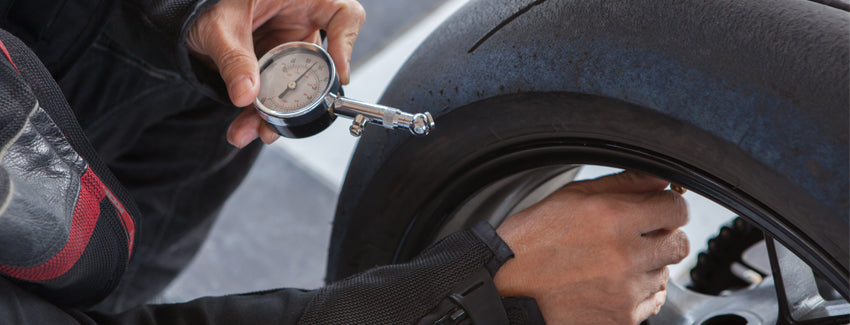|
|
| May is Motorcycle Safety Awareness Month. Motorcyclists have the same rights as any other driver on the road and starts with the savvy rider. Smart riders live by rules, not by speeding, sharing lanes, wearing improper gear, and drinking and driving. You share the road with 18-wheelers, cars, trucks, SUVs, and bicyclists. What is separating you from being a statistic lying on the side of the road is street smarts, common sense, training, and sobriety. Knowledge is king. There is no substitute and no excuse for not knowing the rules of the road and being safe for you and for those sharing that road. |
|
|
| Overview on safety |
|
|
| Safety begins with a properly-maintained motorcycle and a properly-trained motorcycle rider. You need a helmet that fits snugly, but not too tight and clothing that will provide protection should you crash your bike. Before you venture out, you need to assess your route. Are there construction concerns, is it a high traffic time or route, is the weather amenable to riding your motorcycle? |
|
|
| Safety Tips and Techniques |
|
|
| Motorcycle Safety Awareness Documents |
|
|
| New Rider Information |
|
|
| Statistics |
|
|
| Speeding is the leading cause of motorcycle deaths in America. Since the inception of motorcycle awareness education programs and federal legislation in the 1960's, motorcycle fatalities and injuries have been increasing. Over 5,100 motorcyclists died in 2007. Half of all fatal crashes occurred in collisions with another vehicle. Over three-quarters of two-vehicle fatal crashes happened from the front, just five percent struck from the back. Nine out of 10 two-vehicle fatal crashes were on non-interstate roads and half were intersection crashes. |
|
|
|
|
|
|
|
|
| Proper training |
|
|
| Be safe. No matter how long you have ridden your bike with friends, there is always something new to be learned. Take that motorcycle rider course and make sure that you are properly trained. Trainers can give you such tips as to "keep a vehicle on your right when you enter an intersection." You know to watch out for what is happening in front of you, but did you know that you need to be able to know what is happening more than 10 seconds ahead of you? Training will give you those insider secrets. |
|
|
|
|
|
|
| Proper equipment |
|
|
| The proper gear for riding your motorcycle includes helmets, gloves, jackets, pants, boots, and eye protection. A well-made leather jacket can protect you from road rash and other contusions should you wipe out along the road. Never ride with your helmet, it is your number one safety defense, other than your common sense. Always carry identification and a cell phone clearly marked with an "in case of emergency" or ICE contact. |
|
|
|
|
|
|
| Being aware of unsafe roads/weather conditions |
|
|
| Road conditions change frequently. Construction, foul weather, and holiday driving can create dangerous riding conditions. Weather-related hazards include wet or icy roads and inclement weather such as pop-up and severe thunderstorms. Visibility issues such as fog and brush fire smoke also can make it unsafe to ride your bike. |
|
|
|
|
|
|
|
|
|
|
|
| Ensuring the equipment is well maintained |
|
|
| Although most states do not require a formal vehicle inspection for your motorcycle, it is recommended to inspect them regularly for wear and tear. This includes your riding gear. Helmets must be designed and fit correctly or they can fly off during a crash. Regular maintenance includes inspecting gear for tears and fit. Your equipment is on you and under you, regular maintenance is the key to safety. |
|
|
|
|
|
|
|
|
|
| Being aware of the laws |
|
|
| Ignorance of the law is never an excuse in a court of law. Motorcycle law is specific for road and off-road. It defines whether you are required by law to wear a safety helmet, daytime headlight usage, passenger seat, safety inspections, operator certification, license, if you need a muffler, among many others. Each state has different laws and statutes regarding motorcycle use. |
|
|
|
|
The Motorcycle Safety Guide

Tags: Everything else




